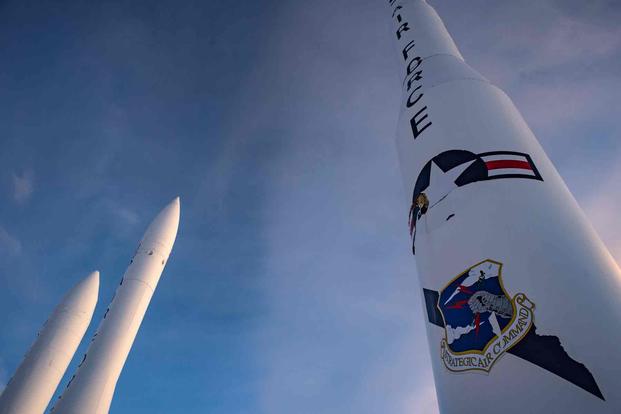Current and former airmen who worked with America’s nuclear missiles are not at higher risk of being diagnosed with cancer, according to the latest findings in an ongoing Air Force study, but officials explained there’s still more data to examine before making conclusions.
Air Force Global Strike Command officials said during a town hall on Thursday that the latest findings were released as part of the periodic updates on the ongoing probe into health and cancer concerns among generations of service members. As the study continues, the service said it wants service members who worked with nuclear intercontinental ballistic missiles to trust its methodology.
The widespread cancer study now includes data from the Department of Veterans Affairs electronic records as well as cancer registries from the VA and Department of Defense — some of which went back to 1976. The latest data results appeared to show that levels of cancer among the nuclear missile community were not higher as compared to the rest of the Air Force and the general population.
Read Next: VA Backtracks on Budget Shortfall Warning, Angering Lawmakers Who Vow an Investigation
Probes into cancer concerns started last year, after a Space Force officer and former missileer created a presentation that revealed concerning cases of non-Hodgkin lymphoma among those who served at Malmstrom Air Force Base in Montana. A widespread investigation followed. The first round of initial data, looking at just DoD medical records, showed elevated breast and prostate cancer rates among those who served at intercontinental ballistic missile bases.
A Military.com investigation this year found that two separate small studies of missileer cancer in the early 2000s raised warnings about potential cancer clusters but weren’t acted on. Air Force Global Strike Commander Gen. Thomas Bussiere told participants in the town hall meeting Thursday that he understands why current and former service members would be wary.
“I sense in the community writ large that there is some skepticism based on the results of the 2001 and 2005 report,” Bussiere said. “I share, and I’ve been very vocal about my unsatisfaction with those two reports, but this study, this effort and this energy, is significantly more focused and engaged than those two times.”
There were several adjustments Air Force medical officials made to their study results released Thursday, namely they excluded anyone who had less than one year of service in the career fields tied to intercontinental ballistic missiles — which excluded more than 19,000 from the missile community.
Additionally, officials said the methodology for calculating the incidence rates was tweaked slightly, determining “there’s no statistically significant difference in the incidence of most types of cancers” between those in the missile community and the Air Force, Col. Anthony Waldroup, the chief of aerospace medicine for the 711th Human Performance Wing, said during the town hall.
Officials detailed that almost all of the data suggested “that the missile community had lower relative risk for developing these types of cancers than the general U.S. population,” Waldroup added.
Air Force Global Strike Command officials hedged on that finding by saying they’re still about halfway through the data they need to get.
“The release of the preliminary information is just an attempt to be transparent, not definitive, in the discovery journey,” Bussiere said during the town hall. “Roughly about 50% of the data that’s out there, we still have another 50% of the data to go through.”
The next steps will start to look at cancer-specific mortality in the missile community, followed by a wide-ranging probe of civilian tumor registries.
Examining state and local cancer registries is a crucial step, as many missileers told Military.com that they had not sought care from the VA or through the Department of Defense because they did not believe, at first, their illnesses were tied to their service, or that it had been decades since they had been in uniform and were already receiving care through their primary private-sector practitioner. Those results will likely not be available until 2025.
But the long wait for findings has been tough on some.
Missileers and their families have been fighting to get VA benefits and connect their service to their illnesses. Relatives for Mark Holmes, a missileer who died in 2020 at the age of 37 from non-Hodgkin lymphoma, spoke out at the town hall about the headwinds they’ve experienced.
“My son’s death was determined to be not service related by the VA and not to be in the line of duty by the Air Force,” Dan Holmes, a former missileer and Mark’s father, said during the town hall. “Mark died in the service of his country, but in addition to fighting this gutless, soulless, heartless, bureaucracy that is the VA for three years now, now it appears to our family that the Air Force, my Air Force, doesn’t care, either.”
Related: They Stood Sentry over America’s Nuclear Missile Arsenal. Many Worry It Gave Them Cancer.
Story Continues
Read the full article here

